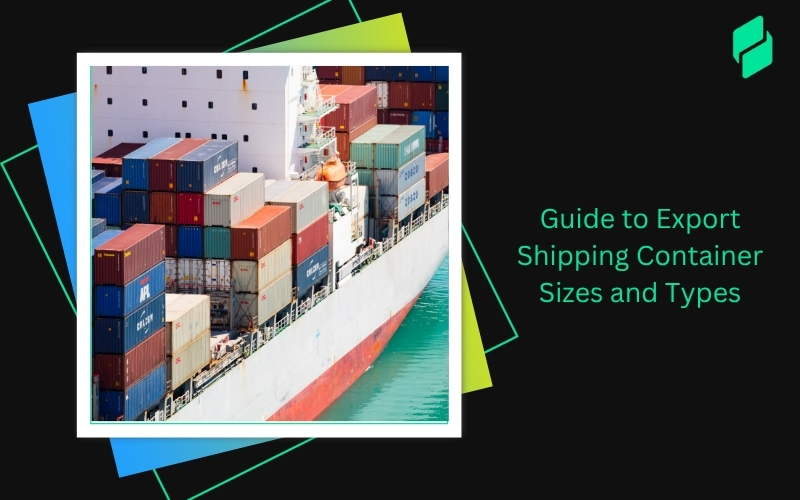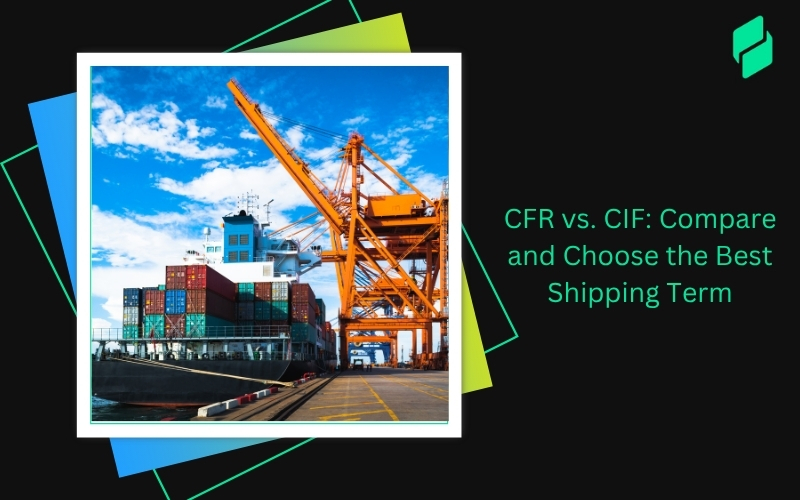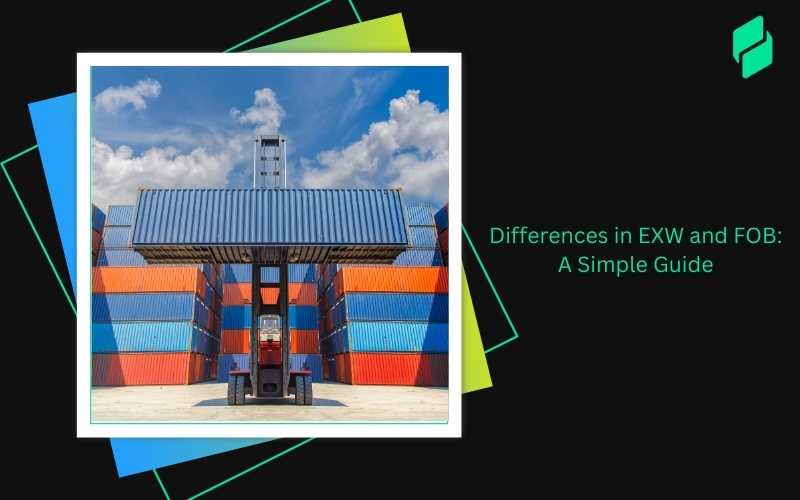Optimize your business: use unlimited savings with Pazago fulfilled now!
Get Started ->When shipping goods across the globe, the margin for error is slim. Ensuring your cargo reaches its destination safely and in its intended condition is critical to maintaining smooth operations.
This is where open cargo inspection comes in. A detailed inspection process helps prevent damages, disputes, delays, and other costly issues throughout the shipping journey.
Open cargo inspection is essential in ensuring that the goods remain intact and that the shipping process complies with local and international regulations.
This blog will walk you through the stages of cargo inspection and explain why they are crucial for the global trade process.
What is Open Cargo Inspection?
Open cargo inspection refers to visually and physically examining goods at different shipping stages to ensure they meet quality and safety standards.
This inspection can occur during transport, including pre-loading, in-transit, and post-unloading. It’s a proactive way to identify potential issues, ensure compliance with local and international regulations, and document the condition of the cargo.
Pre-Loading Inspection Procedures

Ensuring the cargo is ready for shipment starts long before loading begins. The pre-loading inspection involves ensuring everything is in place for a safe and smooth operation, from the equipment used to the condition of the cargo itself.
Readiness of Equipment and Area
Before loading, inspectors check that all the equipment—like cranes, forklifts, and trucks—is operational and fit for use. Equipment malfunctions during loading can cause significant delays or damage to the cargo. The cleanliness and safety of the loading area are also checked to prevent any hazards that could affect the condition of the cargo.
Coordination Between Dock and Ground Personnel
Effective coordination between dock workers and ground personnel is essential for efficient operations. Any communication breakdowns during this phase can lead to mishandling, damage, or delays. Clear communication protocols are necessary to ensure smooth loading procedures and the safe handling of cargo.
Container Loading Inspection

During loading, an essential part of open cargo inspection is supervising how the goods are placed inside containers. This phase ensures that the cargo is loaded correctly and complies with regulations.
Real-Time Monitoring of Loading Operations
One of the most effective methods for conducting a loading inspection is using real-time monitoring tools.
By tracking the loading process as it happens, inspectors can ensure that goods are handled correctly and in compliance with international and local regulations. Real-time monitoring allows issues to be caught early and rectified immediately, minimising the risk of damage.
Visual Monitoring Tools
Today, cargo inspection services rely heavily on mobile apps and digital tools that enable inspectors to capture real-time data, photos, and videos. These technologies help keep stakeholders informed, even when they’re not on site.
Structural Integrity of Containers
The containers are inspected to ensure they are free of any damage, cracks, or weak points that could affect the cargo during transport. Any faults in the container could compromise the entire shipment, leading to delays or disputes with the receiving party.
Proper Lashing and Securing of Cargo
Proper lashing is one of the most important aspects of open cargo inspection. Lashing refers to securing cargo within a container to prevent it from shifting during transport. Inspectors ensure that all items are correctly fastened and secured to avoid any movement that could cause damage, particularly during rough handling or turbulent weather.
Mid-Transport Inspections
Cargo inspection doesn’t stop after loading. Regular checks during transport ensure that the cargo remains in good condition throughout the journey.
Regular Checks for Cargo Condition
During transport, periodic inspections are carried out to ensure that the container seals remain intact and that temperature controls, if required, work effectively. Mid-transport inspections help prevent surprises upon arrival, such as spoilage, damage, or contamination.
Example: A company experienced a system failure while transporting temperature-sensitive pharmaceuticals. Fortunately, they identified and addressed the issue during a mid-transport check, preventing damage to the goods from temperature fluctuations.
Verifying Securing Methods Remain Intact
While mid-transport checks focus on cargo condition, inspectors also verify that the lashing and securing methods used during loading remain intact. Shifting cargo during transport is one of the leading causes of damage. Regular checks ensure that the cargo remains stable, minimising the chances of loss or damage during transit.
Unloading Procedures
Once the cargo reaches its destination, the unloading process must be handled carefully to avoid mishaps that could damage the goods. An unloading inspection ensures that the cargo is handled correctly and that all safety procedures are followed.
Safe Handling During Unloading
Inspectors must ensure that unloading equipment such as cranes and forklifts works properly. They also supervise the unloading process to prevent accidents or mishandling of goods that could damage them. Proper handling during this stage is crucial for fragile or high-value items like electronics and machinery.
Maintaining Safety Protocols in the Unloading Area
The unloading area must be clean and free of hazards to ensure the safety of the personnel and cargo. All safety protocols must be followed to avoid accidents or damage during unloading, such as wearing protective gear and keeping the area clear.
Post-Unloading Inspection Procedures

After the cargo has been unloaded, post-unloading inspections verify the condition of the goods and ensure compliance with the shipping contract.
Visual Inspection for Damage
A visual inspection is conducted to check for any signs of damage, wear, or contamination that may have occurred during transit. Any damages are documented, and claims may be made with the shipping company or insurer, depending on the severity.
Documentation Verification
In the post-unloading phase, inspectors verify the cargo against the original shipping documents, such as the bill of lading. Any discrepancies in quantity or type of goods are noted, and immediate action is taken to resolve the issue.
Standard Documents in Post-Unloading Inspections:
Final Clearance from Authorities
Before the cargo can be delivered to its final destination, it must go through customs clearance. Inspectors ensure that all documentation is in order and that the cargo complies with local regulations. Failure to clear customs can result in costly delays or fines.
Also Read: Difference Between Cargo Screening and Physical Inspection
Detailed Cargo Inspection During Unloading
Visual Checks and Detailed Documentation
Inspectors carefully assess the condition of the cargo during the unloading process by conducting visual inspections. This involves checking for any signs of damage, contamination, or mishandling that may have occurred during transport.
Inspectors document their findings through detailed reports, including photographs, videos, and written notes.
These records serve multiple purposes:
- Dispute Resolution: Detailed documentation provides solid evidence to resolve disputes between the shipper and receiver, particularly regarding damage or discrepancies in cargo quantity.
- Insurance Claims: If damage or loss is detected, the inspection reports are essential for initiating insurance claims, helping businesses recover their losses swiftly.
Ensuring Contamination and Infestation-Free Cargo
The stakes are even higher for certain goods, especially food items, pharmaceuticals, and other sensitive products. Contaminated cargo can lead to health risks, regulatory penalties, or rejection by the receiving party.
Inspectors conduct the following checks during the unloading process:
- Visual and Olfactory Checks: These are the most basic forms of inspection, where visible signs of contamination (like mould or leaks) and unusual smells are detected.
- Pest Control and Infestation Checks: For cargo like grain, fruits, or other agricultural products, inspectors check for insects, rodents, or other pests that could ruin the shipment.
- Regulatory Compliance: Countries often have stringent health and safety regulations, such as India’s Food Safety and Standards Authority (FSSAI) for food imports, which require that goods remain contamination-free throughout the shipping process.
Failure to meet these standards can lead to a rejected shipment, potential health risks, and costly fines, making thorough contamination inspections essential for businesses shipping sensitive goods globally.
Benefits of Detailed Cargo Inspections
A comprehensive cargo inspection process provides businesses with more than peace of mind - it offers tangible benefits that can significantly reduce risks and improve overall shipping efficiency. By implementing regular, thorough inspections, companies can ensure their goods' safety, integrity, and compliance throughout the shipping process.
Here are some key benefits of detailed cargo inspections:
1. Reduced Risk of Damage:
- Inspections at every stage - pre-loading, mid-transport, and post-unloading—help catch potential issues early, preventing costly damage or spoilage of goods.
2. Regulatory Compliance:
- Regular inspections ensure that cargo meets local and international regulations, avoiding fines or penalties from customs authorities. For example, countries like India require strict compliance with customs documentation and health safety standards for certain imports (e.g., FSSAI for food).
3. Accurate Documentation:
- Detailed visual records, including photos, videos, and written reports, help verify the condition of the cargo and provide evidence for dispute resolution or insurance claims.
4. Faster Customs Clearance:
- Cargo that passes inspection without issues will likely clear customs quickly, reducing delays at ports or borders. This is particularly important for time-sensitive or perishable goods like pharmaceuticals or fresh produce.
5. Lower Insurance Premiums:
- Consistent inspections can lower shipments' risk profiles, allowing businesses to negotiate better insurance rates. Insurers often consider cargo with a strong history of successful inspections less risky.
6. Enhanced Customer Confidence:
- Regular inspections demonstrate to customers that the goods they receive are safe, undamaged, and delivered as promised. This builds trust and can lead to stronger business relationships over time.
Also Read: Cargo Inspection and Unloading Procedures
Conclusion: Pazago for Your Global Trade Operations and Cargo Inspections
Pazago, with its extensive network spanning over 110 countries, simplifies the management of imports and exports.
Whether you are dealing with logistics, customs paperwork, or international payments - Pazago's solutions can help you streamline these processes, reduce operational costs by 20%, and cut delays by 50%

Key Features of Pazago
Here’s how Pazago empowers businesses with seamless and efficient trade solutions:
- Centralised Trade Management: Manage your entire trade process digitally, from procurement to fulfilment. The Pazago Portal provides real-time insights, communication, and workflows, ensuring you have full control of your trade operations.
- Smart Document Handling: With Pazago Documents, you can eliminate the confusion of managing paperwork. This feature allows you to create, store, and manage key trade documents like quotations, proforma invoices, and certificates of origin in structured folders for quick, secure access. Stakeholders can collaborate, review, approve, and share documents easily.
- Risk Mitigation & Alerts: Stay proactive with Pazago Trades, which centralises trade management from purchase orders to delivery. Real-time notifications and automated reminders keep you informed, and risk mitigation tools help identify potential delays or bottlenecks in the supply chain.
- Unified Communication Hub: Pazago Inbox is your hub for centralised communication with all trade partners. Discussions are segregated by trade, ensuring clarity and improving coordination. With real-time notifications and updates, nothing gets lost in the shuffle.
- Logistics Simplified: Pazago Fulfilled provides comprehensive shipping and logistics services. Whether ocean freight (FCL, LCL) or inland transportation, Pazago ensures timely deliveries through its global logistics partnerships.
- Integrated Payments: International payments are simplified with Pazago Payments. Enjoy priority clearance, low Forex rates, and quick payments within 3 hours. Foreign currency transfers are not capped, making your transactions smoother.
- Real-Time Cargo Tracking: With Pazago Visibility, you can track shipments in real-time across 180+ shipping companies from 110+ countries. Receive immediate delay alerts and stay ahead by making proactive inventory and logistics decisions.
- Quality Control: Ensure your shipments meet the highest standards with Pazago Quality Control. Our inspection services cover every step of the supply chain to prevent any quality issues from slipping through.
- Customs Clearance & Insurance: Pazago Insurance ensures your shipments are protected at every step. From accurate paperwork to seamless claims processing, we help you navigate customs regulations without unnecessary delays.
Stay Connected with Pazago
At Pazago, our platform constantly improves, providing the best tools to manage your global trade operations. Whether tracking your shipments or organising documents, our mobile application makes it even easier to access everything you need.
📱Download Our Mobile App
Follow Us on Social Media!
Stay updated with the latest news, tips, and updates from Pazago by following us across our social channels:


.png)








